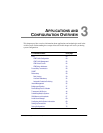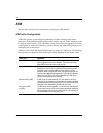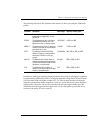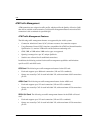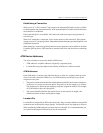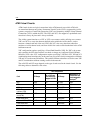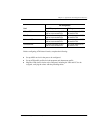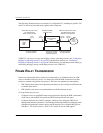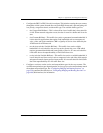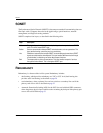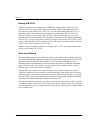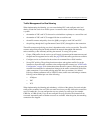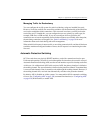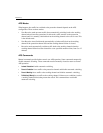
Chapter 3: Applications and Configuration Overview
Avidia System Configuration and Management User Manual 27
• Configure the FRF.5 or FRF.8 circuit for each port. This includes creating the cross connect
through the Avidia system (from the line card to the IDSL frame card), and configuring cell
loss priority, congestion control, and the traffic type. The available traffic types are:
– ubr (Unspecified Bit Rate)—This is a best-effort class of traffic that is best suited for
a LAN. When network congestion occurs, the data is stored in a buffer until it can be
sent.
– cbr (Constant Bit Rate)—This traffic class carries a guaranteed constant bandwidth. It
is best suited for applications that require fixed bandwidth, such as uncompressed
voice, video, and circuit emulation. CBR is a Quality of Service class defined by the
ATM Forum for ATM network.
– nrt-vbr (non-real-time Variable Bit Rate)—This traffic class carries variable
bandwidth. It is well suited for data services such as frame relay over ATM which
requires guaranteed bandwidth and lower Quality of Service. It is not well suited for
LAN traffic due to the unpredictability of LAN traffic burst size.
– rt-vbr (real-time Variable Bit Rate)—This traffic class carries a variable bandwidth. It
is well suited for real-time services such as compressed voice and video which require
stringent cell transfer latency and less bursty traffic. It is not well suited for LAN traffic
due to the unpredictability of LAN traffic burst size.
• Configure a session to set the service and encapsulation types for the cross connect. The
available encapsulation types depend upon the service type you select and both must match
the modem encapsulation type. See “Configuring Bridging and Routing Sessions” on
page 228 (command-line interface) or “Configuring Bridging and Routing Sessions” on
page 486 (Web interface) for information.



